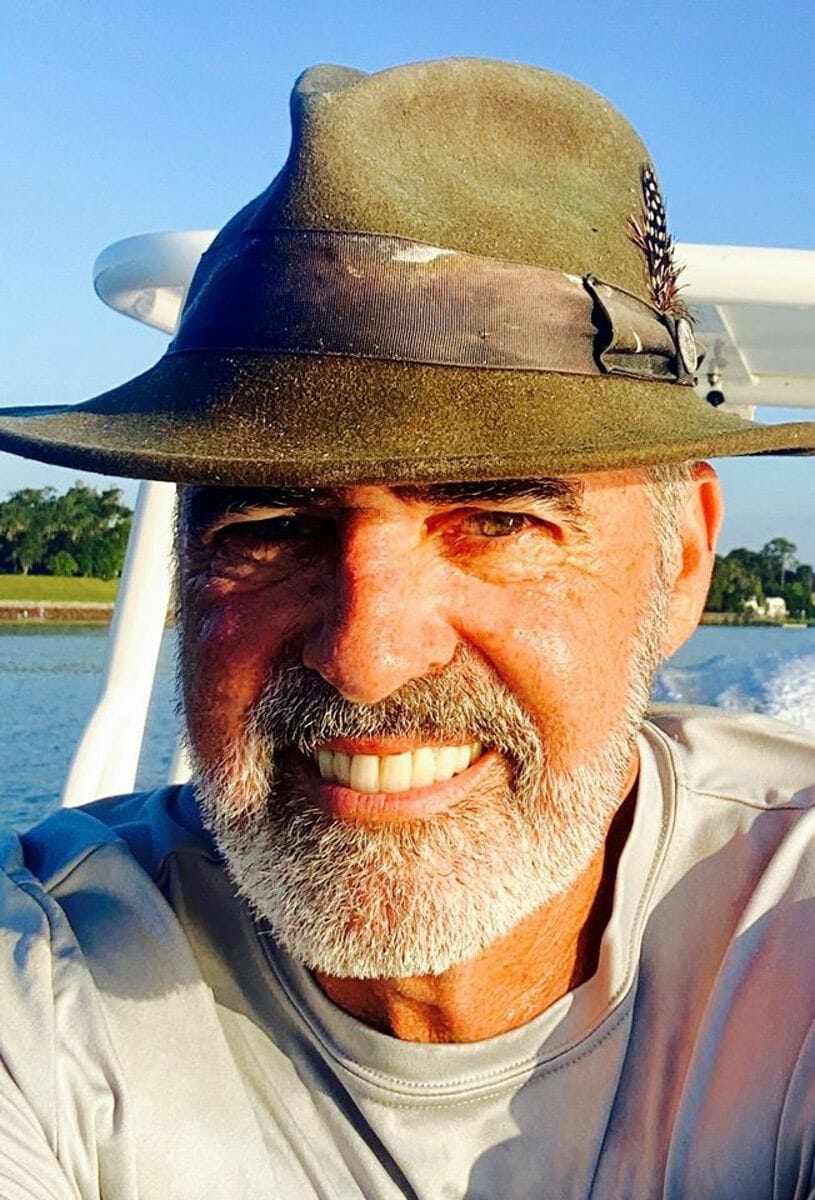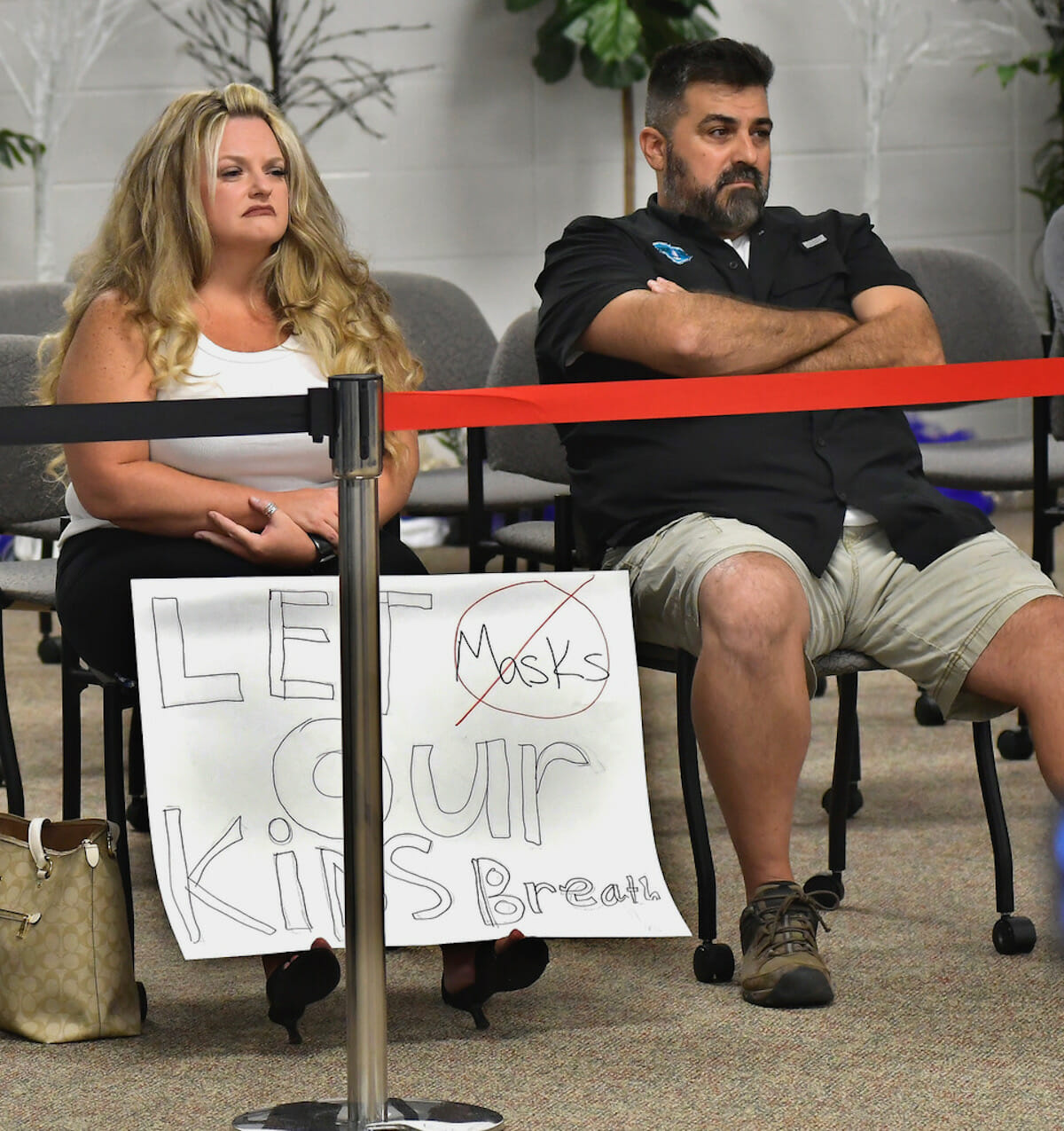By Mindy Lucas
Bluffton High School teacher Michelle Gordon thinks a return to in-person, five-days-a week instruction this fall could be too soon, especially given the high numbers of Covid-19 cases Beaufort County is currently seeing.
After hearing S.C. Gov. Henry McMaster’s call to reopen South Carolina’s schools with face-to-face instruction last week, Gordon’s response was, “not yet,” she said.
It’s a phrase she often uses when her students say they can’t do something or they’ll never understand the concepts she teaches as a math teacher.
“So I will say, ‘Not yet, but as you continue to work at it …you’ll get it,’” she said.
Like Gordon, many teachers across the state are now questioning whether the governor and other elected officials are truly “getting it.”
After McMaster’s press conference last week, teachers took to social media to express their concerns – and much of it was not good.
According to analysis conducted by the University of South Carolina’s Social Media Insights Lab, an immediate opposition from teachers, school administrators and parents could be seen on social media.
An analysis of 915 comments in the days following the press conference, found significantly less support for reopening than what the lab had seen earlier in the month. Only four percent favored reopening while eight times as many comments, 31 percent, were negative.
“Conversations changed when the governor outlined his plan,” said Jack Landess, an Insights Lab analyst on the lab’s website. “The posts we saw showed a lot of frustration, with fear that in-person classes will endanger teachers and school personnel as well as enhance the spread of COVID-19.”
South Carolina Superintendent of Education, Molly Spearman, said while every South Carolina parent must be given the option of both virtual learning and face-to-face instruction, she would only approve plans that offer “high quality options and keep safety as their top priority.”
In addition, many of the state’s top teacher associations have since weighed in saying they opposed the governor’s move to reopen schools without additional consideration for the pandemic.
“The Palmetto State Teachers Association categorically opposes Governor McMaster’s push for all school districts in South Carolina to operate in-person instruction, five days a week, without regard for the status of the coronavirus pandemic when schools are scheduled to resume,” the association said in a statement released last week.
The association went on to say while they applauded the governor’s call for districts to move start dates to fall, they also believed if health conditions did not improve it would be “irresponsible and dangerous” to return to full, in-person education.
“We believe this action would needlessly jeopardize the health and safety our state’s 800,000 students and more than 50,000 teachers,” the association stated. “While we know more now than we did in March about how Covid-19 is spread and contained, the current rate of spread of Covid-19 in our state makes a return to full in-person instruction far more dangerous than it was when the governor ordered schools to close in March.”
SC for Ed, the South Carolina Education Association, the South Carolina School Boards Association and the South Carolina Association of School Administrators have all issued similar statements.
It’s a level of concern Gordon said she’s been hearing from colleagues, many of whom see a virtual model as the “safe alternative.”
“In a non-pandemic world, full-day schooling with face-to-face instruction would clearly be the best option,” she said in an emailed letter to The Island News. “But unfortunately, we are living in a pandemic-stricken world and trying to work our way back to ‘normal.’ We need to make decisions that won’t set us back, but instead push us forward in stopping the spread of this disease.”
While teachers like Gordon have acknowledged the importance of face-to-face instruction, they have also pointed to the challenges and risks of teaching during a pandemic while trying to adhere to health and safety protocols.
What’s more, there are concerns over one’s own health and the health of teachers’ families.
“Teachers are just concerned that they could be placed in a position where they could be affected and those they love could be put in the (same) position,” said Gordon who has an 11-year-old herself.
At an online press conference on Friday, Beaufort County School District officials acknowledged the importance of providing flexible options not only for parents but for teachers as well and a workforce that is already facing potential shortages.
According to the county:
- 366 teachers in the current teacher force are 55 and older;
- 175 are eligible for retirement because of age or years of service;
- 46 percent of the district’s current work force (including all employees) are in a high-risk group themselves or live with or provide care to someone who is at high risk for Covid-19.
Overall, while Gordon felt the district’s plan, released on Friday, was “very comprehensive,” there were still questions as to how the two options would work in conjunction with each other, and what that first week of school will look like.
“Many teachers have asked, who will teach virtual and who will teach face-to-face and what does that even look like to do a hybrid model,” she said, referring to a model the school district would implement if too many parents register for in-person education.
In that model, students would be assigned different days to attend school in an effort to reduce class size, district officials have said.
“I know the district is working really hard at putting that together, but there’s still big question marks,” Gordon said.
Like other teachers across the state, she points to the work conducted by the Department of Education’s AccelerateED Task Force.
The group, comprised of school officials and leaders from around the state, recommended that if a county had a DHEC-reported COVID-19 infection rate of “High,” the instruction provided should be virtual until rates go down.
Beaufort County has consistently rated “High” on those metrics for the last few weeks.
“Let’s trust our state health experts, monitor their data and make sound decisions,” Gordon said when discussing whether to return to in-person education. “Until the data show marked improvement, I will continue to say, ‘Not yet.'”
Related story:






